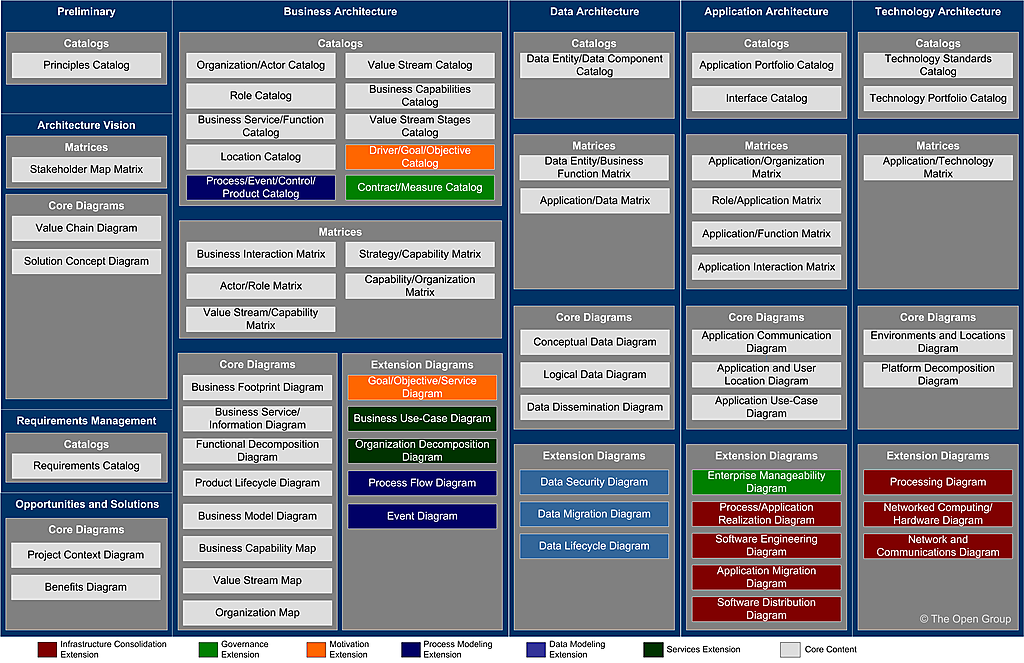Demystifying TOGAF ADM: Architectural Artifacts by Phase
Introduction
The TOGAF® (The Open Group Architecture Framework) Architecture Development Method (ADM) is a comprehensive framework for designing and managing enterprise architectures. One of the key aspects of TOGAF ADM is the creation and utilization of architectural artifacts. These artifacts play a crucial role in the architecture development process, aiding in the organization, communication, and understanding of architectural information. In this article, we will explore the various architectural artifacts used in TOGAF ADM and clarify which artifacts are associated with each phase of the ADM.
The Role of Architectural Artifacts
Architectural artifacts are essential elements in the TOGAF ADM, helping structure and convey architectural information to stakeholders. They serve as a bridge between the technical intricacies of architecture development and the specific concerns of stakeholders. The primary types of architectural artifacts in TOGAF are building blocks, catalogs, matrices, and diagrams.
Building Blocks
Building blocks are fundamental entities within the architecture metamodel. For instance, a building block could represent a business service like “Purchase Order.” These building blocks carry metadata, which is essential for querying and analysis. Metadata attributes, such as owner, enable stakeholders to extract relevant information. Building blocks can also encompass other entities, making them a powerful tool for capturing various aspects of architecture.
Catalogs
Catalogs are essentially lists of building blocks, typically of a specific type or related types. They serve governance and reference purposes. An example is an organization chart that displays locations and actors within an organization. Like building blocks, catalogs contain metadata that aids in query and analysis, making it easier for stakeholders to find the information they need.
Matrices
Matrices are grid-based representations that illustrate relationships between multiple model entities. They are particularly useful for displaying list-based relationships that may not be easily represented graphically. For instance, a CRUD (Create, Read, Update, Delete) matrix can show which applications perform specific data operations. Matrices provide a structured way to analyze complex relationships in the architecture.
Diagrams
Diagrams are graphical renderings of architectural content, designed to help stakeholders retrieve necessary information efficiently. They serve multiple purposes, including visually representing architecture content and ensuring completeness in the collected information. TOGAF defines a set of architecture diagrams to be created, such as organization charts. These diagrams can be tailored to different styles and content coverage to suit specific stakeholder concerns.
Mapping Architectural Artifacts to ADM Phases
The diagram supplied depicts Architectural Artifacts organized by their corresponding phases within the TOGAF ADM framework. Additionally, the Figure below highlights the recommended artifacts to be generated in each ADM phase.

Conclusion
Architectural artifacts play a pivotal role in TOGAF ADM, helping architects communicate, organize, and analyze architectural information effectively. Understanding which artifacts are associated with each phase of the ADM can simplify the architecture development process and enhance communication with stakeholders. By utilizing the right artifacts at the right time, architects can ensure that their architecture projects align with business goals and stakeholder needs, ultimately leading to successful enterprise architecture outcomes.

